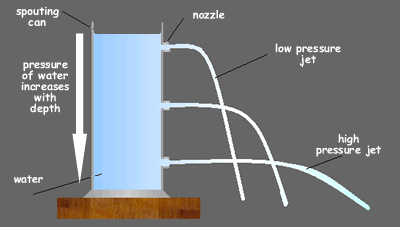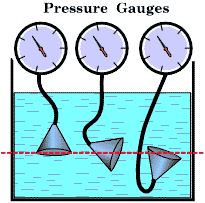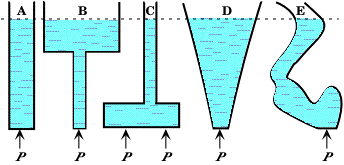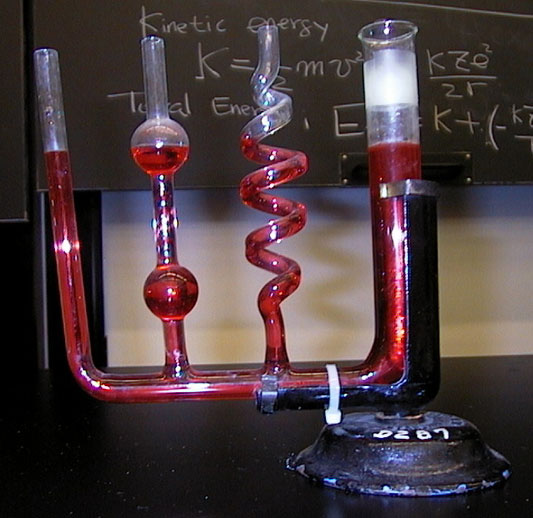Pressure in fluids
A fluid can be either a liquid or a gas. The pressure in a fluid causes a force normal (at right angles) to any surface it is in contact with - from the constantly moving particles pushing against the container walls. All force vectors for the impact with the sides can be resolved into horizontal and vertical components. The components that are perpendicular to the sides of the container create the pressure on the container - the ones parallel to it create no pressure. So pressure is produced by a force at right angles to the surface and therefore by Newton's Third Law we know that the pressure from a gas produces a net force at right angles to any surface. The pressure at the surface of a fluid can be calculated using the equation:
Where:
Pressure on an object within a fluid.Within the fluid there is pressure. If you immerse an object in a fluid it will feel the pressure of the atmosphere pushing down on the surface on the liquid and the additional weight of the column of liquid above it.
Pressure = force/contact area If we consider an object immersed in a liquid it is being pushed down by a column of fluid above it. The contact area is the cross sectional area of that column of fluid above the object. density of the liquid = mass/volume ρ = m/V so, mass = density x volume of the column m = ρV Now, the volume of the column is the height of column (h) x csa of column (A) So. mass of column = (density of fluid x height of column x csa of column) m = ρhA Now, the force exerted by the weight of liquid in a column (F) = its mass x gravitational field strength (g) F = mg So, the force = (density x height of column x csa of column) x gravitational field strength F = ρhAg and as pressure = force/area the pressure exerted by the column of liquid = (density x height of column x csa of column x gravitational field strength )/csa of column. p = F/A = ρhAg/A So,
Hydrostatic Pressure in a Liquid
|
Follow me...
|
|||||||||||||||


 A fluid is something that can 'flow' - it has no fixed form.
A fluid is something that can 'flow' - it has no fixed form.







